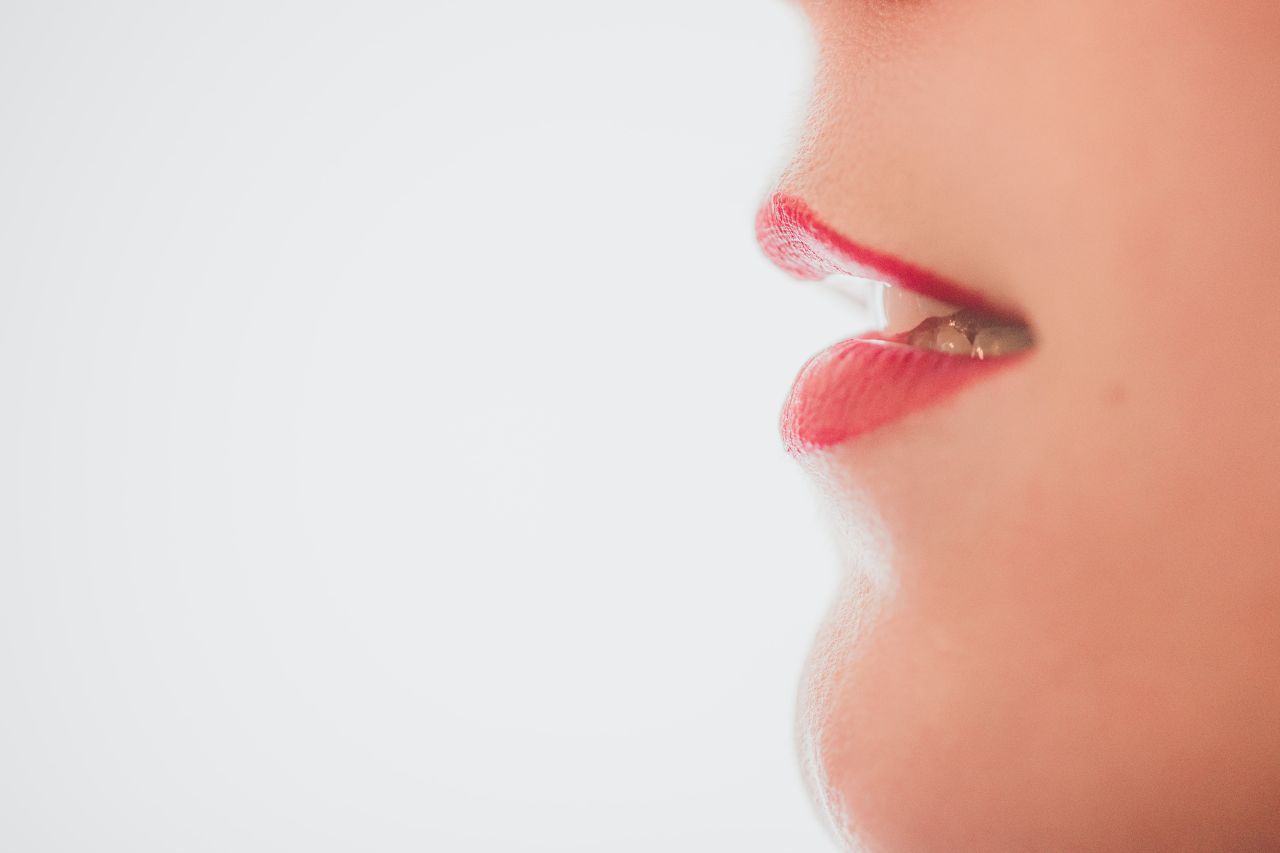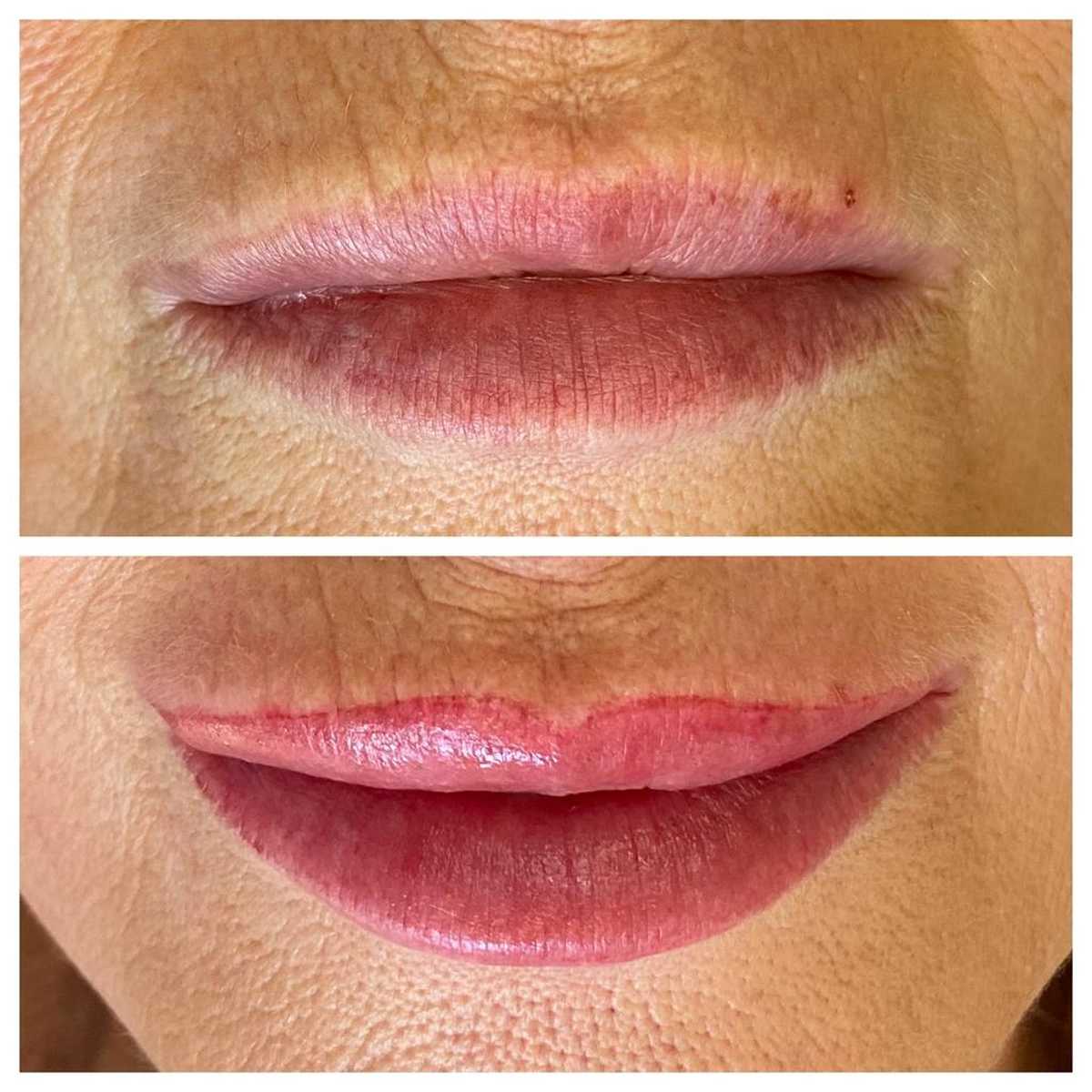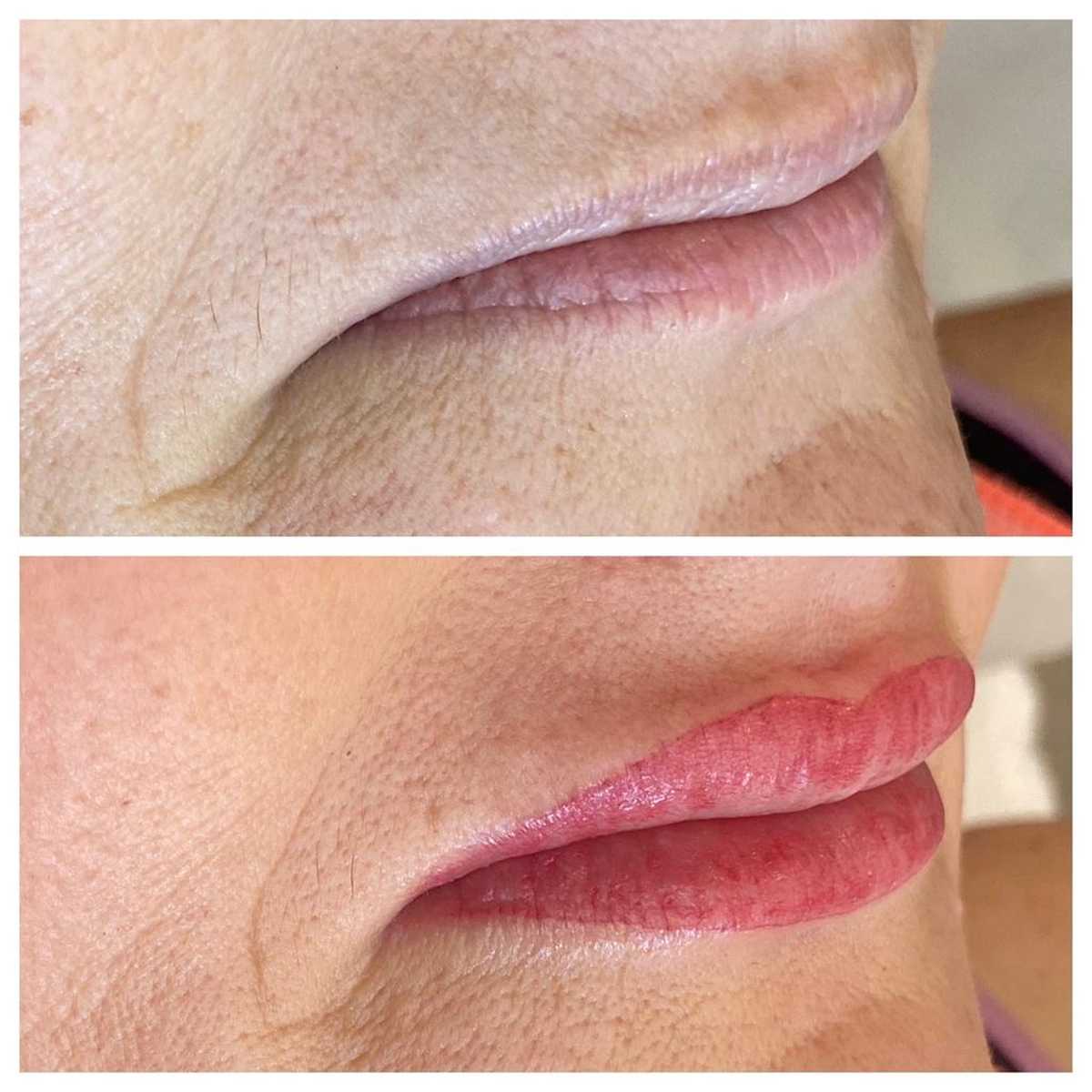If you're considering a lip tattoo, you may think it's just like other kinds of body art - fun, fashionable and relatively low-risk. But there are some important things to consider before deciding on this procedure. From health considerations to complications resulting from the ink used or inadequate experience of the artist involved, when it comes to a lip tattoo, you can't afford to skip doing your research or leaving anything out! In this blog post, we'll dive deeper into what you need to know about getting a lip tattoo so that you can make sure your experience is both safe and enjoyable. So let's get started!
Our exclusive range of eyebrow feathering services will help you in eyebrow microblading, feathering or hair stroke eyebrow tattooing procedures.
What Is A Lip Tattoo?
Lip tattoos are the professional application of coloured pigments to the lips using tiny tattoo needles. Lip tattoos are just one sort of permanent makeup, also known as cosmetic tattooing, which can be used for various cosmetic purposes.
It would be best to realise that getting a tattoo anywhere, even the lips, can be uncomfortable and lead to infection. You should get all the information before deciding whether to get one of these popular tattoos.
Fast Facts About Lip Tattoos
Tattoos on the lips can be applied to either the inner or outer lips. Lips are another popular area for permanent cosmetic tattooing.
Efficacy
Tattoos on the lips tend to fade more rapidly than on other body areas. Most tattoos last for years, but you may require touch-ups every few months.
Safety
Selecting a qualified tattooist and a trustworthy tattoo parlour will lessen the likelihood of unwanted outcomes. However, because of the difficulty in maintaining sterility, infections are more likely with this tattoo.
Convenience
Lip tattoos are particularly unpleasant because of the mouth's sensitivity.
Time For Pain And Healing
Since the skin on the lip is so delicate and there are so many nerve endings, it's crucial to weigh the potential discomfort of a tattoo against the potential aesthetic benefits. Lip tattoos are notoriously unpleasant because of the constant need to keep the mouth open and completely still throughout the process.
The only thing that can prevent you from holding it together and focusing during the tattoo is that you must turn your lip inside and out. After getting a lip tattoo, it's important to take good care of it. Neglecting adequate ink care is risky due to the high concentration of bacteria in the mouth and the frequency with which it is used. A lip tattoo usually completely heals within two weeks.
Even though the interior of your mouth tends to heal quickly, it would still take as much time as any other tattoo to heal completely. If you don't take care of your tattoo, it could take longer because of all the bacteria in your mouth.
Tattoos on the lips require special aftercare because you can't clean the inside of your mouth with antibacterial soap. Instead, rinse the area twice daily with an antimicrobial mouthwash that does not contain alcohol. Check out our range of eyebrow tattoo services to help with your problems.
The dermatologist recommends using mouthwash once daily to maintain healthy oral bacteria levels. While the wound is healing, you should abstain from substances that could hasten its breakdown and avoid touching the affected area. Avoid eating acidic or spicy foods during healing, as these can disrupt the ink's natural settling process. Also, if you can, refrain from smoking and doing anything else that can irritate you. Maintain a sanitary lip and always think about your tattoo, even if you can't see it.
Frequently Asked Questions About Lip Tattoos
Tattooing the lips is one of the most painful parts of all body parts. During the tattooing process, the customer must retain their bottom lip open and maintain complete stillness throughout the procedure. Unfortunately, a lip tattoo may only remain visible for a few weeks or months because of the rapid turnover of cells in the oral environment.
It's safe to say that they're the height of fashion. Even if they aren't the current tattoo vogue, inner lip tattoos are still very much in style. Many famous individuals enjoy showing them off on Instagram, and the vast majority of people get them as a novelty, with the understanding that they will eventually fall off. But, contrary to popular belief, not all of them are excruciatingly painful.
Sun, sweat, steam, and swimming should all be avoided for at least 48 hours, ideally for seven days. Likewise, it's best to steer clear of activities like kissing, eating spicy foods, drinking hot beverages, and putting ice straight on your lips.
Lip blushing is a semi-permanent cosmetic tattooing that involves depositing pigments into your lips using small needles. This process gives the appearance of natural flushing on the lips. This is more of a cosmetic enhancement than a traditional tattoo art, even though it is sometimes called lip tattooing.
The colour of your lips will appear to be more vibrant than it will once they have healed. Additionally, you may notice that your lips are becoming puffy and painful. Because the pigment is oxidised, your colour may experience a momentary darkening as the day progresses. After these days, the swelling should be completely gone.
What Are The Risks Or Side Effects Of Getting A Lip Tattoo?
Despite the widespread acceptance of tattoos, one should be aware that they carry potential hazards and adverse effects. This is especially true for the hypersensitive skin that surrounds the lips. Therefore, take into consideration the following dangers:
1. Infections.
A few potential triggers could lead to an infection following a tattoo in the lip area. First, you must confirm that your tattoo artist's equipment and needles have been properly sanitised. You must follow the aftercare recommendations given to you, which include using a mouth rinse. This can also put you at a greater risk for infections due to the fact that saliva, food, and liquids come into touch with the lips. Tattoos on the inner lip are especially vulnerable to infection because of the moisture and germs inside the mouth.
2. Allergic Reactions.
Consider having a conversation with your tattoo artist regarding the possibility of utilising allergenic ink if you have a history of skin sensitivity or allergies. Itchiness, a rash, and hives are some of the symptoms that may accompany an allergic reaction.
3. Swelling
Needles used for tattooing leave behind very small punctures in the skin. Because of the nature of these injuries, it is normal for your skin to swell up in response; however, this should begin to subside within the next several days. Applying cold compresses to an affected area can help reduce swelling.
4. Anaphylaxis
A significant allergic reaction has been observed in some persons within hours of getting tattooed; while this is uncommon, it does happen. For example, it's common for your lips to swell after receiving a lip tattoo. But if you also have trouble breathing and puffiness in your neck and cheeks, you should visit the emergency department immediately. Anaphylaxis can be fatal if not handled promptly.
5. Blood-Borne Illnesses
Diseases including hepatitis B, hepatitis C, and HIV are transmitted through blood and can be spread if needles are not properly sanitised.
6. Scarring
Lip tattoos might scar if they don't heal completely. In addition, scarring at a tattooed area might be made worse by post-treatment symptoms, including allergies or infections.
Lip Tattoo Benefits
Are you sick of constantly reapplying lipstick and lip liner that only appears to dry and chap your lips further? If you sum up how much money you spend on lip liner and lipstick over the course of a year, you might be shocked. A permanent lip tattoo could be the answer if you want to save money without sacrificing your lips' healthy sheen and youthful appearance.
A lip tattoo may make your lips look significantly larger and more defined when done properly. After getting a lip tattoo, you won't need a lip liner pencil since the lines will be just where you want them to be. Colours won't run, fade, rub off, or stain your teeth. A closer examination of the key advantages of lip tattoos is provided below.
Long-Lived Results
Lip tattooing, like traditional tattooing, permanently alters the appearance of the lips by implanting hypoallergenic, all-natural pigments into the skin's dermal layer. A slight lip colour fading is expected over time, but the results will last for years to come. So, any time you see your tattoo's colour fading, it takes a quick visit to the tattoo parlour to make it look new again.
Lip tattoos fade over time, so you can easily update your look if a new makeup trend catches your eye, or you simply tyre of your current shade. When the ink on your present tattoo fades, you can replace it with something fresh that complements your new look.
Therapeutic
Lip tattoos, as was previously noted, can effectively hide imperfections in the lips. After light burns, sunburns, or scarification from specific medical disorders, it can be used to redefine the lips' original outline and form. To combat the significant de-pigmentation caused by chemotherapy, lip tattooing can be helpful for people who have been diagnosed with oral cancer.
The list of perks and advantages associated with lip tattoos is long. In most cases, they improve the lip's shape and colour. You will only need to reapply your lip colour or liner sometimes, and the colour will stay there all day long.
Non-Invasive Option
Lip tattoos are a great way to change how your lips look cosmetically. It's the non-surgical alternative to lip fillers for achieving the bigger, more alluring lips you've always wanted. Such procedures are both inexpensive and less intrusive. Medical-grade anaesthetic is typically used to make the tattooing process as painless and pleasant as possible.
After the operation, you can enjoy permanently larger and more sensual lips. Lip irregularities, UV damage, and abnormally thin lips are just some of the imperfections that cosmetic tattooing may fix. In addition, the surgery improves aesthetics, practicality, and self-esteem. Women who are allergic to or otherwise uncomfortable with invasive lip repair procedures may find lip tattoos a convenient alternative.
Affordable
Lip tattoos are great since they look great but won't break the bank or add to your already hefty beauty budget. However, lip augmentation alternatives, such as injections, can be extremely pricey, and the potential hazards may not be worth it. Contrarily, lip tattoos rarely exceed a few hundred dollars.
How Does The Lip Tattoo Process Work?
An artist will sketch your desired lip tattoo design before beginning the procedure. Once they have decided where on your lips, they want to apply the outline, they will do so.
Your artist will puncture your skin carefully and slowly with new, sterile needles loaded with your chosen ink colours. After the tattoo is finished, a clean bandage will be placed over your lips to keep them from getting infected.
It will hurt, and there may be some bleeding. A lip tattoo could hurt more than one on your arm or leg.
Healing time for a new tattoo is typically around two weeks, so take care of it properly before leaving the shop. Using soap to clean your mouth is not recommended. Thus, an antimicrobial mouth rinse is a need.
How To Choose A Lip Tattoo Artist
Finding a qualified tattooist or aesthetician to perform permanent makeup is essential to reduce the risk of undesirable outcomes. Having the operation done in a studio by a certified professional is highly recommended. Some jurisdictions require that businesses providing tattoos be licenced and registered within the state in which they are located. There may be exceptions to this requirement; therefore, it's important to research the laws of your state.
It would be best if you also verified that the artist follows safe tattooing methods, such as using tattoo-specific inks and sterilising equipment and surfaces between clients. One who is serious about their craft will protect their hands by using only new needles, ink, and trays. Looking for microblading salon? Look no further,Cosmetic Tattoo by Rach got you covered.
Ensure the tattooist is clean and sanitary and only uses tattoo-safe inks and equipment. A professional artist will always use clean equipment such as gloves, new inks, trays, and needles.
A portfolio of their previous work should be made available for further evaluation of the artist's skills. To put it plainly, not all artists specialising in permanent ink can produce high-quality lip tattoos.
Conclusion
Lip tattoos are created by precisely applying coloured pigments with tiny tattoo needles. Lip stains fade faster than body stains and can be applied to the inner or outer lip. It's important to weigh the pain of a tattoo against the beauty benefits. Lip tattoos are excruciating because the patient must keep their mouth open and still. Lip tattoos usually heal in two weeks.
Lip tattoos require twice-daily mouthwash, avoidance of acidic or hot foods, and lip cleanliness. Despite their popularity, tattoos can cause illnesses. To avoid infection, ensure the tattoo shop has cleaned their tools and needles and follow their aftercare guidelines. For an inner lip tattoo prone to infection, use allergenic ink if you have skin sensitivities or allergies. Due to needle punctures, tattooed skin usually swells.
Cold compresses reduce edema. Untreated anaphylaxis can kill and aggravate wound healing and scarring. Permanent lip tattoos can save money without compromising your lips' health and appearance. Lip tattooing is a non-surgical alternative to lip fillers that permanently changes lip appearance using hypoallergenic, all-natural pigments implanted into the dermal layer of the skin. It can hide imperfections, shape lips, and restore lip colour after chemotherapy.
Modern medical anaesthetics make tattooing comfortable and affordable. Lip tattoos can improve the beauty, practicality, and self-esteem of women allergic to or unhappy with lip restoration surgery. An artist will draw a design and puncture the skin with sterilised needles while a clean bandage covers the lips to prevent infection. Then, for two weeks, take care of your new tattoo. A tattooist or esthetician should do permanent makeup to reduce risks. The tattoo artist must follow state laws, use only tattoo-grade inks, and sanitise the studio between customers.
Content Summary
- From health considerations to complications resulting from the ink used or inadequate experience of the artist involved, when it comes to a lip tattoo, you can't afford to skip doing your research or leaving anything out!
- In this blog post, we'll dive deeper into what you need to know about getting a lip tattoo so that you can make sure your experience is both safe and enjoyable.
- Lip tattoos are particularly unpleasant because of the mouth's sensitivity.
- After getting a lip tattoo, it's important to take good care of it.
- If you don't take care of your tattoo, it could take longer because of all the bacteria in your mouth.
- Tattoos on the lips require special aftercare because you can't clean the inside of your mouth with antibacterial soap.
- Maintain a sanitary lip and always think about your tattoo, even if you can't see it.
- Despite the widespread acceptance of tattoos, one should be aware that they carry potential hazards and adverse effects.
- A few potential triggers could lead to an infection following a tattoo in the lip area.
- Tattoos on the inner lip are especially vulnerable to infection because of the moisture and germs inside the mouth.
- Consider having a conversation with your tattoo artist regarding the possibility of utilising allergenic ink if you have a history of skin sensitivity or allergies.
- Itchiness, a rash, and hives are some of the symptoms that may accompany an allergic reaction.
- Needles used for tattooing leave behind very small punctures in the skin.
- For example, it's common for your lips to swell after receiving a lip tattoo.
- Scarring.
- In addition, scarring at a tattooed area might be made worse by post-treatment symptoms, including allergies or infections.
- A lip tattoo may make your lips look significantly larger and more defined when done properly.
- A closer examination of the key advantages of lip tattoos is provided below.
- Lip tattooing, like traditional tattooing, permanently alters the appearance of the lips by implanting hypoallergenic, all-natural pigments into the skin's dermal layer.
- The list of perks and advantages associated with lip tattoos is long.
- In most cases, they improve the lip's shape and colour.
- Lip tattoos are a great way to change how your lips look cosmetically.
- After the operation, you can enjoy permanently larger and more sensual lips.
- Lip irregularities, UV damage, and abnormally thin lips are just some of the imperfections that cosmetic tattooing may fix.
- In addition, the surgery improves aesthetics, practicality, and self-esteem.
- Women who are allergic to or otherwise uncomfortable with invasive lip repair procedures may find lip tattoos a convenient alternative.
- An artist will sketch your desired lip tattoo design before beginning the procedure.
- A lip tattoo could hurt more than one on your arm or leg.
- Healing time for a new tattoo is typically around two weeks, so take care of it properly before leaving the shop.
- Finding a qualified tattooist or aesthetician to perform permanent makeup is essential to reduce the risk of undesirable outcomes.
- Having the operation done in a studio by a certified professional is highly recommended.
- Ensure the tattooist is clean and sanitary and only uses tattoo-safe inks and equipment.
- A professional artist will always use clean equipment such as gloves, new inks, trays, and needles.
- A portfolio of their previous work should be made available to evaluate the artist's skills further.
- To put it plainly, not all artists specialising in permanent ink can produce high-quality lip tattoos.



